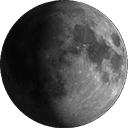
Red Tide Confirmed in Multiple Regions of Texas Coast
AUSTIN –Texas Parks and Wildlife Department is working with other agencies to monitor a red tide event along the upper Texas coast and the Lower Laguna Madre.
The presence of red tide on the upper coast was confirmed on Sunday, Sept. 3, at a red tide monitoring station near Freeport. Low to moderate concentrations of red tide have been detected near Freeport and the Texas City Dike. The bloom is suspected to have caused fish kills at San Luis Pass, Surfside Beach and the Quintana/Freeport Channel.
In the Lower Laguna Madre, low concentrations of red tide have been detected in water samples from Good Hope Circle Beach and the Gulf Beach in Cameron County.
The microalgae that cause red tide (Karenia brevis) is a naturally occurring organism that produces a toxin affecting the central nervous system of fish, causing paralysis and the inability to breathe. As a result, red tide blooms often result in dead fish washing up on Gulf beaches. When red tide algae reproduce in dense concentrations or “blooms,” they are visible as discolored patches of water, often reddish in color.
The last red tide occurrence in Texas was in 2018 and occurred in the upper and middle coast of Texas.
People who are near the water during red tide may experience irritation of the eyes, nose and throat, as well as coughing, wheezing and shortness of breath. People with an existing respiratory illness, such as asthma, may experience these symptoms more severely. If you have concerns or questions about human health effects of red tide or symptoms you are experiencing, consult a physician.
Updated information on the current red tide situation in Texas, as well as background information how it affects people and fish, is available on the TPWD Red Tide webpage or by calling the red tide status hotline at (800) 792-1112 (select “fishing” and then “red tide”). Satellite imagery of the algae bloom can also be found on the National Centers for Coastal Ocean Science website.







